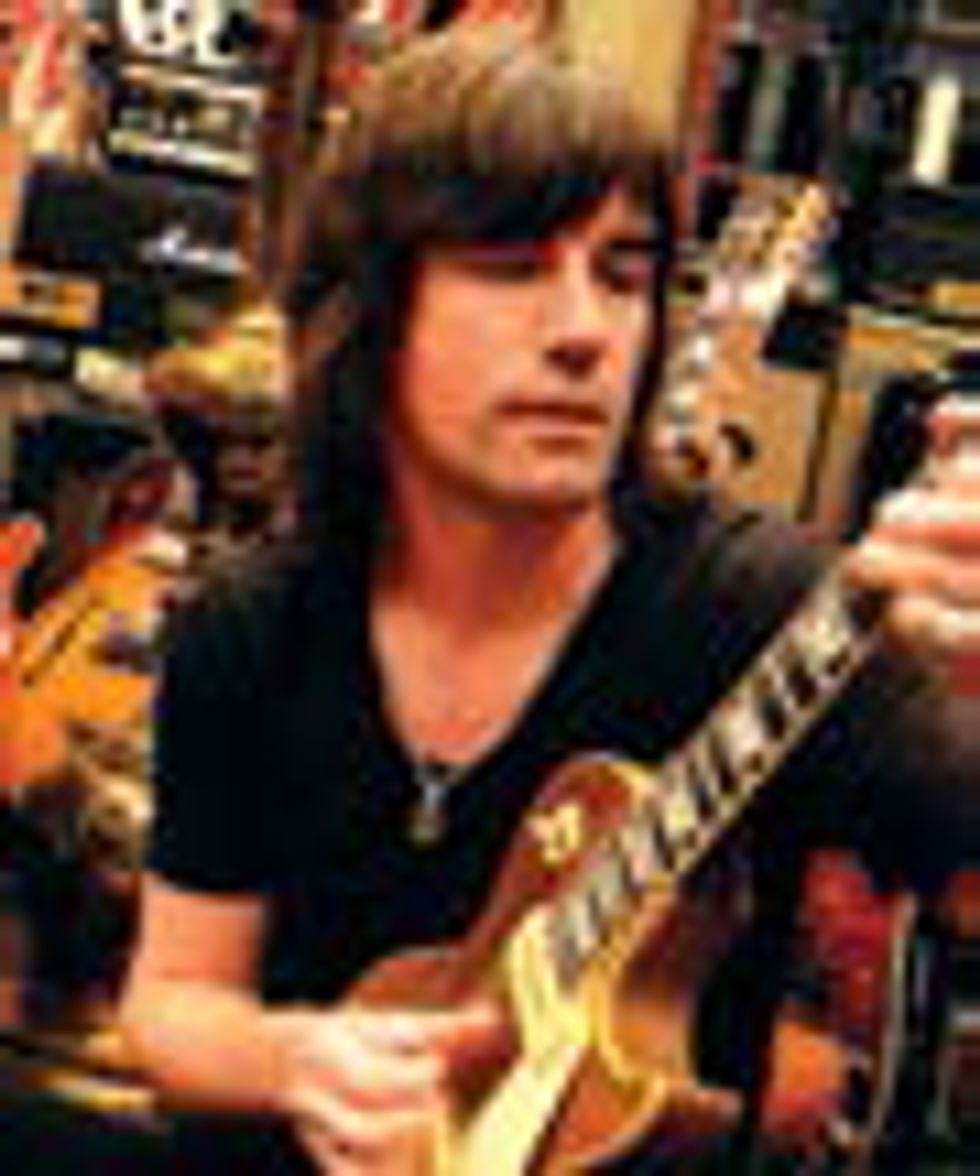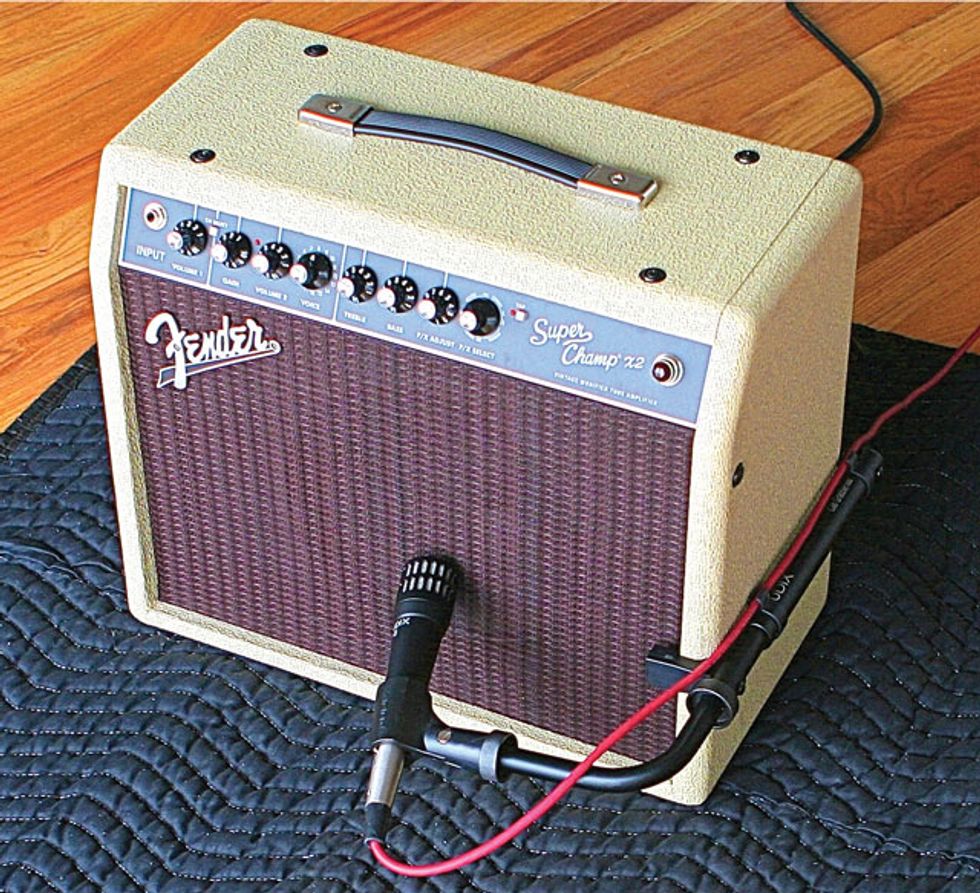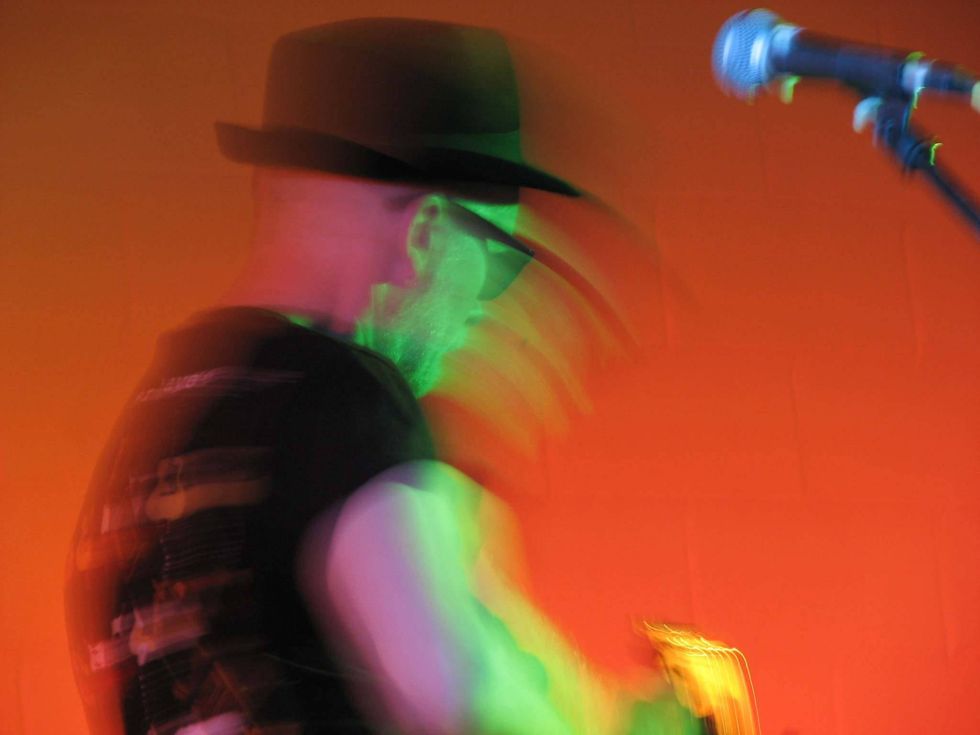Sometimes, the stars align and a gig goes just perfectly. You arrive early at the venue, there’s time for an extensive soundcheck, the crew is top notch, and the room sounds just right. Your rig is totally dialed in and the band is ready to fire on all cylinders. During the gig, you’ve got the packed, enthusiastic crowd in the palm of your hand, there are no equipment or musical mishaps, and you leave the stage feeling awesome.
This month’s column isn’t about any of that.
The Big Picture
In the grand scheme of things, the most
important thing to remember is that when
people come to see you play, they are on your
side. They want to be entertained and they’re
rooting for you. Sounds simple, but it can be
easy to forget when things start going wrong
onstage. If the audience expected perfection,
they could just listen to your record. What
they want is a show.
Strings can break, amps can blow up, you might forget the chords to the bridge. It’s how you spontaneously deal with adverse, difficult situations onstage that can actually make a decent show a great show, even more exciting than it would have been if everything went smoothly.
I recall a White Stripes performance on Conan O’Brien that’s a perfect example of this. During a guitar solo, Jack White ran over to Conan’s desk, laid his guitar flat on it, and proceeded to play a slide solo. But when he strapped the guitar back on, the cable pulled out! Realizing he was in a predicament—and making a split-second decision—White dropped the guitar, ran over to the vocal mic, and finished the song with just drums and vocals, giving it a 110 percent effort. And I swear, it was better that it happened that way. It made for a totally exciting and unique performance.
Sound and Equipment Issues
Sometimes venues simply just don’t sound
good. The subwoofers might be under
the stage, creating lots of bass and rumble
or the stage could have a hard wall right
behind it and have a low ceiling, making
the sound loud and chaotic. The PA and
monitors could be terrible. Whatever the
scenario, it’s always important to remember
that the audience doesn’t want to know
about any of it. They paid to be there and just want to have fun. It’s your job to rise
above and if at all possible, find solutions.
Let’s talk about a few tricks.
When playing on a stage that’s especially loud and live, I ask the local crew if there’s an extra drum rug. These are normally used to keep drums and hardware from sliding around, and most clubs will have them available. I use them in front of my amps and cabinets to help kill some of the liveliness of a hard stage. They can also help warm up and tighten the sound a bit by killing brash, early reflections.
If the stage sounds chaotic, try angling your cabinets up towards you and more directly at your ears by using some wood blocks under the front edge of the cabs. You’ll probably want to turn down a bit when doing this, which will usually help the overall stage mix, thereby improving the front-of-house mix and lowering the chaos factor.
When it comes to volume, I believe a band should settle in around the drummer. In a perfect world, you shouldn’t need monitors at all—except for vocals, of course—to hear each other. If you are doing a soundcheck and things sound loud, harsh, woolly, or just all wrong, try turning off the PA and monitors altogether and starting from that point. Play together and then slowly fill in the gaps, getting only what you really need in your wedge. For me, I’m good to go with just a bit of kick drum and hi-hat, some lead vocal, and my own vocals. Less is more in a room with bad sound.
Musical Mishaps
If the music train starts to derail during your
show, do not panic. This is the number one
rule. Everyone makes mistakes every now
and then. Warren Haynes says, “mistakes are
opportunities” and this can be true. If the
singer forgets the words to the bridge, it might
be time to try out those new licks you’ve been
working on. It’s important to always have one
another’s backs when gigging, and you never,
ever want to bad vibe anyone for making a
mistake, at least not onstage. Save the “what
happened there?” discussion for the van ride
home. Remember it’s just music.
Big Gigs, High Pressure
Zakk Wylde was once asked what he does to
prepare for big, high-pressure gigs like television
performances. His advice was essentially:
Don’t do anything different than usual.
Play the song just like the last 80 times you played it in the bar or theater or your own
bedroom mirror. Guess what happens the
second you psych yourself out by thinking,
“this is a big gig, everyone’s watching me, I
better not screw up?” You screw up. If I’m
doing TV and I feel nerves coming on, I’ll
try to mentally picture Zakk giving me this
advice. It helps me get my head in the game
and back to what’s important—the music.
Remember
The last trick is one that I learned from Chris
Cornell. Sometimes, when doing TV, you
may have to perform an abbreviated version
of a song by cutting the guitar solo or possibly
dropping half of the second verse. This
can be hard to remember in the heat of the
moment, especially when you’ve performed a
song many times with a certain arrangement
and are suddenly forced to play it differently.
What I do is put a sign by my pedalboard
that simply reads, “REMEMBER.” That’s
it—one word. Just looking down and seeing
that will be enough to jar your memory, and
you’ll do exactly what you need to do.
If Keith Can Do It
I once saw Keith Richards screw up the intro
to “Brown Sugar” in front of a stadium crowd.
He made a funny face, shrugged, kept calm,
and carried on. And the crowd loved it!
 Peter Thorn is an L.A.-based guitarist, currently touring
with Melissa Etheridge. His solo album,
Guitar Nerd, is available through iTunes and
cdbaby.com. Read more about his career at
peterthorn.com.
Peter Thorn is an L.A.-based guitarist, currently touring
with Melissa Etheridge. His solo album,
Guitar Nerd, is available through iTunes and
cdbaby.com. Read more about his career at
peterthorn.com.








![Rig Rundown: Russian Circles’ Mike Sullivan [2025]](https://www.premierguitar.com/media-library/youtube.jpg?id=62303631&width=1245&height=700&quality=70&coordinates=0%2C0%2C0%2C0)









